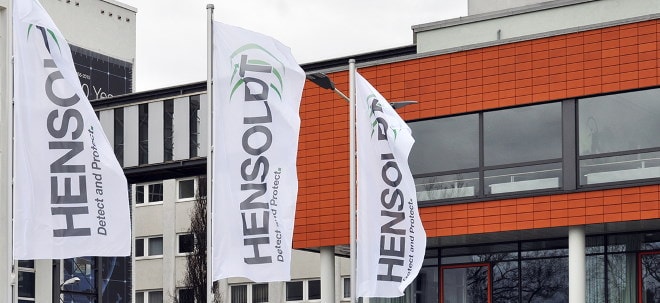Wellness Real Estate Market Reached $584 Billion in 2024 and Is Forecast to Double to $1.1 Trillion by 2029
Global Wellness Institute unveils major update of its groundbreaking 2018 report, Build Well to Live Well, packed with new data, global project examples, and impact studies for the wellness real estate market––which has been growing an extraordinary 20% annually over the last five years and evolving far beyond "hot" amenities in luxury properties
MIAMI, June 17, 2025 /PRNewswire/ -- The nonprofit Global Wellness Institute (GWI), the leading research organization for the wellness industry, today released Build Well To Live Well: The Future, a complete and deep revision of its original 2018 report on the wellness real estate market, which has served as an invaluable reference guide for the industry. The 160-plus-page report reveals that wellness real estate has been by far the fastest growing market in the 11-sector, $6.3 trillion global wellness economy, doubling from $225 billion in 2019 to $548 billion in 2024. To put that 19.5% annual growth rate in perspective, overall global construction growth was only 5.5%. Regional markets with the fastest annual growth rate (from 2019 to 2024) are Latin America–Caribbean (24%), Middle East–North Africa (22.6%), and Europe (22.4%). The GWI projects 15.2% annual growth over the next five years, with the market reaching $1.1 trillion by 2029.
"In our view, wellness real estate is the most important sector in the global wellness economy, because it affects the enabling environment, the access, and equity of how we can all live with health and wellbeing," said Katherine Johnston and Ophelia Yeung, GWI's senior researchers. "There is no going back to ignoring wellness, as we spend trillions of dollars each year to build homes, infrastructure, and places for work and play. It is our charge to make wellness real estate as compelling, understandable, and actionable as possible."
Download the free report HERE
Graphs are HERE
The Story Behind the Numbers:
In addition to presenting the business case (new global, regional and national market data), the report also offers a deep dive into why we need more wellness real estate, how to develop it, and how to promote its health benefits. It explores six dimensions of wellness to incorporate into projects (physical, mental and spiritual, social, civic and community, economic and financial, and environmental) and details how to tangibly realize them, providing hundreds of project examples worldwide. It gathers the vast body of evidence on how built environments impact human health and offers the very first compilation of wellness impact studies conducted by residential real estate projects. The report also identifies twelve of the biggest future market opportunities.
Five Big Market Shifts:
MARKET GROWTH: 2013–2024
2013: $100 billion
2017: $148.5 billion
2019: $225 billion
2023: $465 billion
2024: $584 billion
Projected 2029: $1.1 trillion
Every year since the GWI first quantified the market in 2013, wellness real estate has been the fastest-growing sector in the wellness economy. From 2023 to 2024, the market grew 18%––and it's forecast to double over the next five years. Wellness real estate now represents about 3.3% of global annual construction output.
Regional Markets: Growth 2019–2024
2019 | 2023 | 2024 | Annual Growth Rate | |
North America | $100B | $207B | $239B | 19 % |
Asia–Pacific | $77.5B | $152B | $179B | 18.2 % |
Europe | $46B | $103B | $126B | 22.4 % |
Middle East–N. Africa | $710M | $1.5B | $2B | 22.6 % |
Latin America–Caribbean | $550M | $1.3B | $1.6B | 24 % |
Sub-Saharan Africa | $240M | $400M | $430M | 12.5 % |
The market is intensely concentrated: North America, Asia–Pacific and Europe together make up 99% of the global total, with the largest market, North America, accounting for 44%. But in recent years there's been rapid growth in the Middle East Gulf countries, especially in Saudi Arabia and the United Arab Emirates, and also in Latin America, especially in Brazil and Mexico.
Top 10 National Markets:
2019 | 2023 | 2024 | Annual Growth Rate | |
United States | $95B | $193B | $223B | 18.8 % |
China | $37B | $74B | $86B | 18.5 % |
UK | $11B | $29B | $38.5B | 29 % |
Australia | $16B | $27B | $31B | 14.6 % |
France | $10B | $23B | $29B | 24.5 % |
Japan | $8B | $17B | $21B | 23.1 % |
Germany | $9B | $17B | $19B | 16.5 % |
Canada | $6B | $14B | $16B | 22.6 % |
India | $6B | $10B | $13B | 20.3 % |
South Korea | $6B | $10B | $12B | 15.9 % |
The US accounts for a staggering 41% of the wellness real estate market. Together, the US, Canada, China, Australia, Japan, UK, France and Germany make up 85%. The national annual growth leaders from 2019 to 2024 are the UK (29%), the Netherlands (27.9%), Singapore (27.5%), France (24.5%), Italy (22.9%) and Vietnam (22.6%).
The Wellness Price Premium: After an extensive review of over 300 academic, peer-reviewed, and independent studies, GWI finds solid global evidence that wellness-focused residential properties at the middle and upper ends of the market command a price premium of 10–25%, while commercial buildings have demonstrated a 4.4–7.7% rental premium per square foot.
The Future––12 Unmet Needs: The misconception that wellness real estate is the domain of luxury homes with trendy amenities remains persistent. The report identifies the 12 biggest missed opportunities, together with numerous examples of properties pioneering these solutions.
The other crucial unmet needs/opportunities are: 6) earth-friendly and sustainable living, 7) innovations to improve the fundamentally unwell, climate-destroying and wasteful construction process, 8) building healthier food environments, 9) infusing wellness into tourism infrastructure to underpin wellness tourism, 10) embracing the benefits of nature, 11) healthcare clusters expanding to healthy communities, and 12) improving healthspans and thriving in aging.
A companion report, Build Well to Live Well: Case Studies, will be released in the fall, with in-depth case studies illustrating a wide range of wellness real estate projects across different regions, types and sizes of properties, and target markets.
Research Sponsors: This research is made possible with support from Fountain Life, the science-backed longevity and preventative health company, and Blue Legacy Ventures, a global model for longevity-focused real estate.
About the Global Wellness Institute
The Global Wellness Institute (GWI), a nonprofit 501(c)(3), is considered the leading global research and educational resource for the global wellness industry and is known for introducing major industry initiatives and regional events that bring together leaders to chart the future. GWI positively impacts global health and wellness by educating public institutions, businesses and individuals on how they can work to prevent disease, reduce stress and enhance overall quality of life. Its mission is to empower wellness worldwide.
![]() View original content to download multimedia:https://www.prnewswire.com/news-releases/wellness-real-estate-market-reached-584-billion-in-2024-and-is-forecast-to-double-to-1-1-trillion-by-2029--302483582.html
View original content to download multimedia:https://www.prnewswire.com/news-releases/wellness-real-estate-market-reached-584-billion-in-2024-and-is-forecast-to-double-to-1-1-trillion-by-2029--302483582.html
SOURCE Global Wellness Institute

